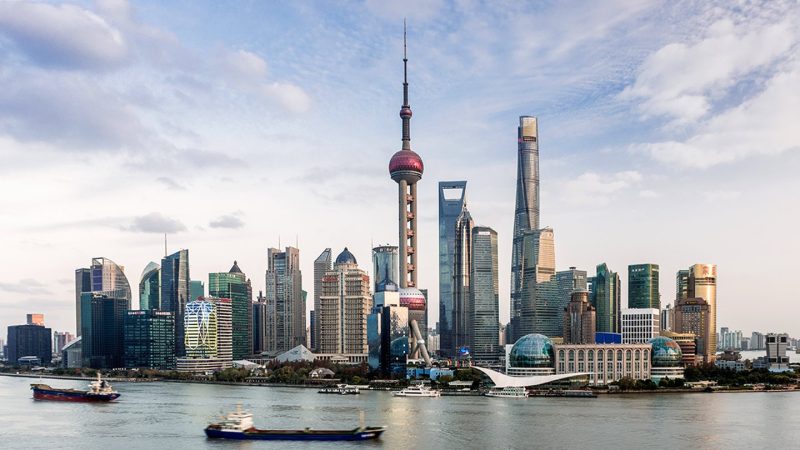by Stephen Green, Economist – Asia, Capital Group
Investors in China should prepare for a rough patch. The economy is slowing, and regulations are tightening in several industries. The economic cycle turned in June/July, based on the official China Purchasing Managers Index readings and other indicators that we track. Heading into 2022, I think GDP (gross domestic product) growth will be considerably lower than the current consensus forecast of around 5%.
Here are a few reasons that lead me to this view:
1. Credit is tight in the real estate market.
Primary real estate sales are about 15% of GDP, and the indirect demand the sector generates makes it even more important to the economy. And credit is tightening in the real estate sector. Home-buying restrictions could be loosened. But, with low inventories and contracting housing supply, any loosening could result in even higher house prices, undermining the government’s key policy objective that “housing is not for speculation.”
Evergrande, the country’s second-largest developer, is likely headed for a managed bankruptcy process. The unwinding will likely involve selling off Evergrande assets project by project to SOEs (state-owned enterprises).
The government’s top priority is to protect those who pre-bought Evergrande apartments, which reportedly amounts to approximately 600,000 buyers. Suppliers to Evergrande are already being “paid” in the form of property that’s been cut in price by 20% to 30%, based on what my colleagues and I have heard from our sources.
But Evergrande is just the most obvious entity in a troubled sector. Dozens of medium-sized developers have weak cash flows and are having trouble obtaining bank loans or issuing debt. Some are slashing prices in order to raise cash. In the past, the larger developers would come in and buy the unfinished projects, but that’s unlikely now.
There’s also the likelihood of a property tax program that will be piloted in some cities. Many middle-class urban households own two properties, and this could dampen consumer demand, depending on the tax rate that may be set and its scope.
China’s economy appears to be weakening

Source: FactSet. Latest available data as of September 30, 2021. An index reading of 50 signals no change since the previous month. Above 50 signals an increase (or improvement), below 50 a decrease (or deterioration). The greater the divergence from 50, the greater the rate of change signaled.
2. Consumer confidence is ebbing, and retail sales growth is slowing.
Consumer confidence never fully recovered after China’s initial COVID-19 outbreak in early 2020. And neither did income growth, particularly for lower income groups. Retail sales growth is still positive, but again, the pace of growth is declining. Car sales are also falling in absolute terms though that’s mostly due to supply disruptions due to a lack of components, according to our analysts who cover the sector. Youth employment in urban areas is pushing up, while overall surveyed employment still has not returned to its pre-COVID-19 base.
The government’s Common Prosperity agenda on improving life for the lower middle class could also result in a spate of taxes on property, inheritance, luxury and alcohol, which would impact a wide swath of the upper middle class, potentially further dampening consumer sentiment.
3. Heavy industry could see excess capacity, and industrial profits have softened.
The real estate boom of 2018-20 supported high levels of demand for steel. That, plus supply reforms that wiped out old and excess capacity in the mid-2010s, meant that heavy industry returned to health. With end demand contracting now, we could see some excess capacity return. The data is volatile, but the trendline shows that industrial profits are now below pre-COVID levels, which could dampen corporate capital investment in 2022.
Profit in China's industrial sector has slowed

Source: Capital Strategy Research. Data as of August 1, 2021
Government has tools at its disposal to stimulate
No doubt, the government has tools at its disposal to stimulate the economy. China’s benchmark interest rate is 4%, which is very high compared to other economies, so the People’s Bank of China has room to lower rates. We could even see a 25 to 50 basis points cut in interest rates in the next few months.
The challenge authorities face is that, at a time when they want to continue to clamp down on housing and local government debt, cutting rates may be risky. Beijing also might worry about lowering rates when the rest of the world is hiking, potentially dampening capital inflows. So, while rate cuts might suggest significant loosening, I doubt they’ll be enough.
When Beijing has stimulated growth in previous cycles, it has usually both cut rates and told the banks to lend more, which creates end demand by stimulating the property and infrastructure sectors. But while property is paid for by households, infrastructure is paid for by local government-owned entities so it’s a de facto government liability.
This time, there’s much less room on the fiscal front with government debt, when properly measured, at more than 100% of GDP and rising rapidly. Beijing has tried to make this debt more transparent by funding more of it through public bonds, but it has not effectively curbed the still-large “hidden debt.”
I also believe that, in the near-term, Beijing is comfortable with sacrificing growth to achieve key strategic priorities.
While many are focused on the 20th Central Communist Party (CCP) Congress in fall 2022 as a reason to expect a stimulus package, I think the leadership now has its eyes on 2035-40, when they envision being a strong and technologically advanced country. I believe the government is willing to take short-term pain for long-term gain.
CCP General Secretary Xi Jinping, in addition to wanting to deflate the property market, wants funding to flow to the regime’s strategic priorities environmental protection, electric vehicles, semiconductors and weapons. It’s clear as well that the CCP today wants a different relationship with the private sector than the party of yesterday.
As a result, I do not expect any significant loosening of policy in the next three to six months.
I could be wrong, of course. For sure, there will be a lot of pressure to loosen by year-end, especially if fourth-quarter economic data is well below expectations. If that’s the case, we will probably get some rate cuts and perhaps a turn to proactive fiscal policy in 2022.
But my base case is that these will not be big enough to turn growth around until at least the second half of 2022 and maybe later. Given that consensus market expectations are for an official GDP growth rate of 5% for 2022, I think there is a significant risk of a negative surprise.
Stephen Green is an economist covering Asia. He has 16 years of investment industry experience as of 12/31/20. He holds a PhD in government from the London School of Economics and an honors degree from Cambridge.












